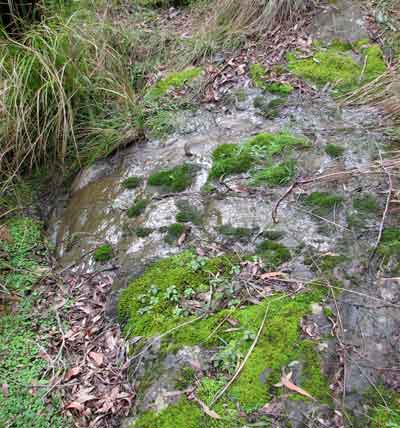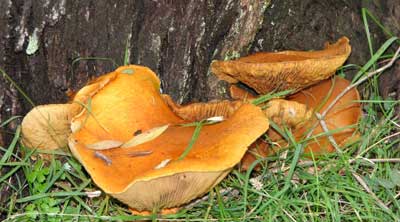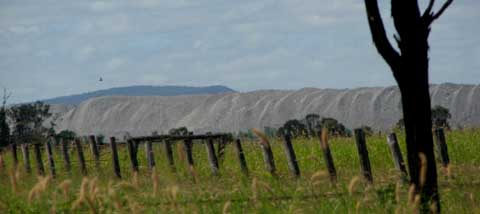
As central Queensland floods, I am hearing much in the media about the economic damage to the coal mines there, but not what those mines are contaminating as the floods surge through them. Or as the exposed coal stockpiles at every mine, rail loader and port loader wash into the floods.
When the town of Theodore was evacuated, I immediately thought of the flatness of the country and the road to Theodore, which runs for kilometres beside the Moura mine’s heavy metal-laden overburden dumps, now washing into the rushing flood, and of their contaminated mine water, usually stored in earth-walled tailings dams.
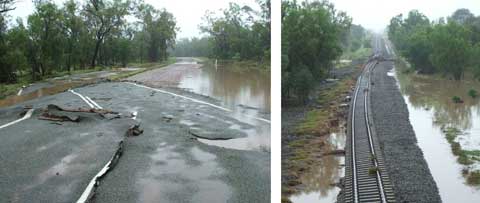
And if you ever thought road and rail were solid things, just look at how they have been pushed aside by water — lifted like frosting on a cake, as shown by this photo of the Banana to Theodore route, passed on by Avriel Tyson from near Rolleston.
What will such power have done in all the mines up there?
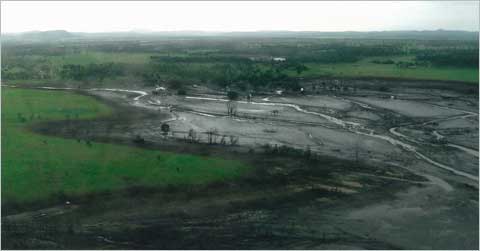
In previous floods, such walls have broken or been overflowed, and mines fined (tuppence!), as at the Ensham and Rolleston mines in the Emerald region, for releasing these toxic waste waters into the river system — and hence to the Great Barrier Reef. This photo, of the Rolleston mine flooding in that previous event, was taken by Avriel Tyson.
The Tysons have been isolated on their homestead island of slightly higher ground (which I had thought was flat when I was there) by the current unprecedentedly high flooding since late December, creeks breaking their banks that never have before, their road washed away — one of their heifers turning up 20 kilometres away! — and they are told that the next-door mine has had two metres of water over its railway line.
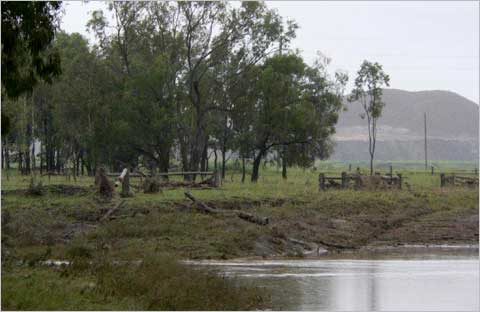
As the waters dropped, Avriel took photos of flooded Sandy Creek near their boundary, with the Xstrata mine behind.
Tysons have been here for over 100 years but Avriel says that this is a first; that the normal flood direction is baulked by the mine’s ‘ring tank levees and overburden piles’.
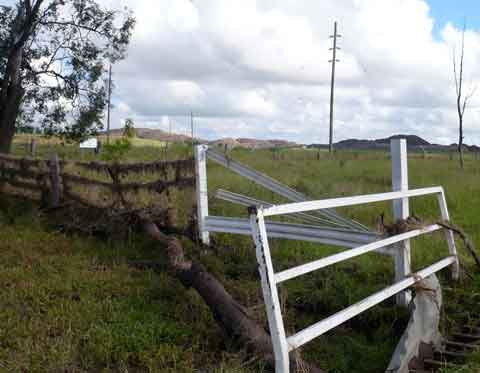
She wonders what the mine is doing with its water, and, looking at the debris on the fence and grid at their boundary with the mine, I too wonder what invisibles the mine has deposited.
Farmers expect to work with flood plain systems, mines can’t.
There are about 40 mines in the Bowen Basin, many of which interfere with the natural spread and flow system of floodwaters, their massive earthworks blocking and channelling so the plain no longer functions as nature designed.

In the Surat Basin, increasingly sieved with a network of gas wells and test bore holes — Taroom, Chinchilla, Dalby — what will the aftermath damage be from all the submerged and tumbled drilling sites and pipelines? The photo above, passed on by Avriel, is on the Taroom/Roma road.
Mine management ‘plans’ for hazardous materials and wastes may tick the government boxes for approval but they only work on paper, not on the flood plains. Thirty more mines are planned for the Bowen Basin in the next five years, and half of the existing 40 are expanding.
Poisoned river systems, poisoned silt deposited on farmland? We need to hear from the mining industry how they are dealing with this aspect of multliple flooded mines, not just how it will hurt their profit margins.







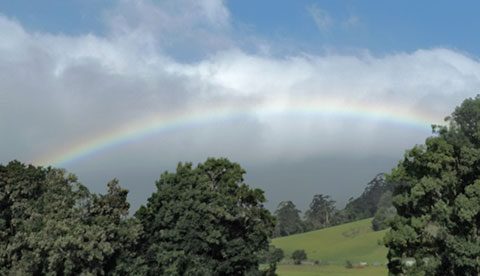
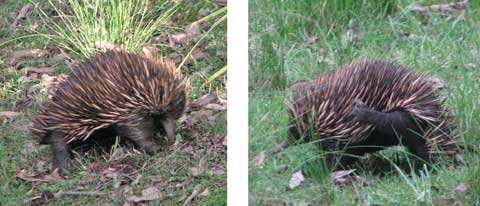
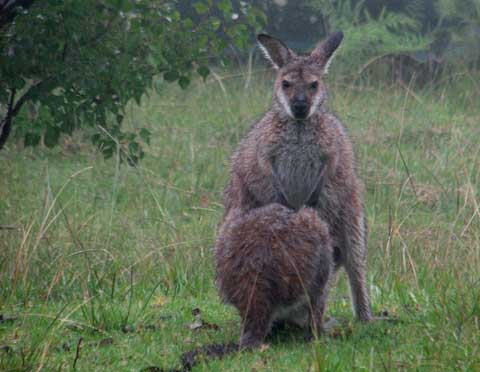
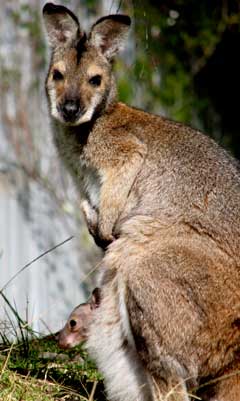 We all know how mothers have to be on the ball to keep an eye on the young. This was borne home to me afresh by my wallaby mates lately.
We all know how mothers have to be on the ball to keep an eye on the young. This was borne home to me afresh by my wallaby mates lately.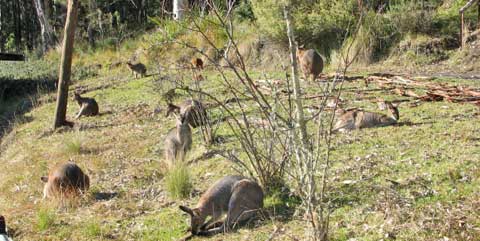
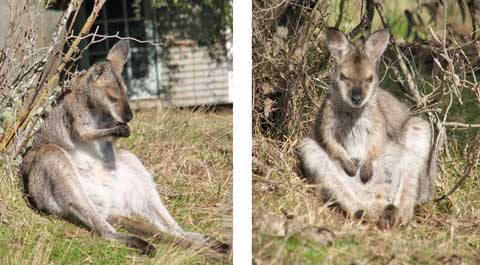


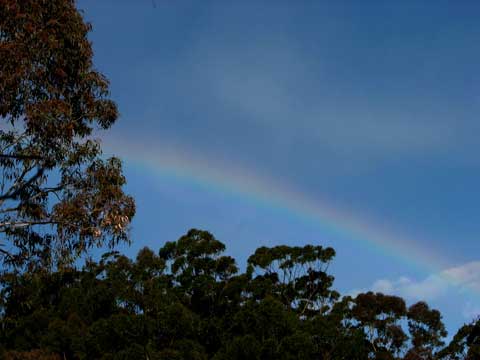
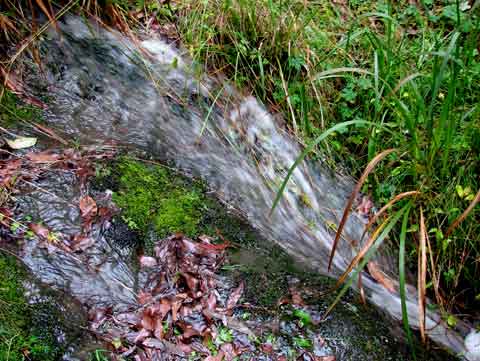






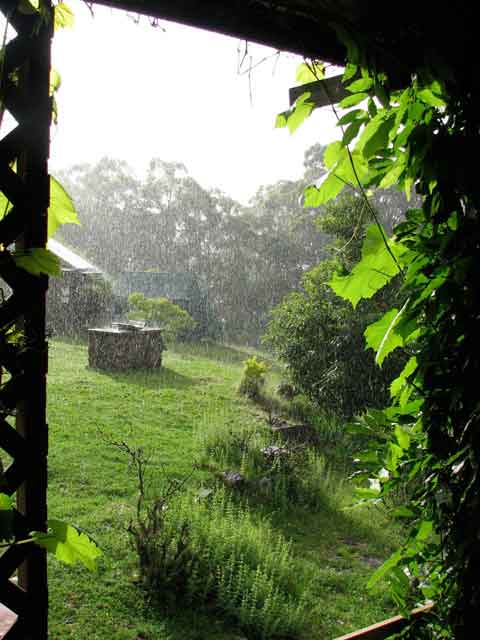
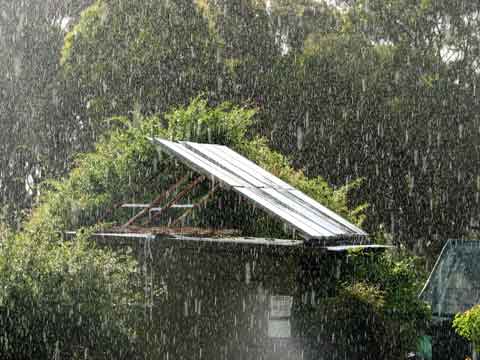
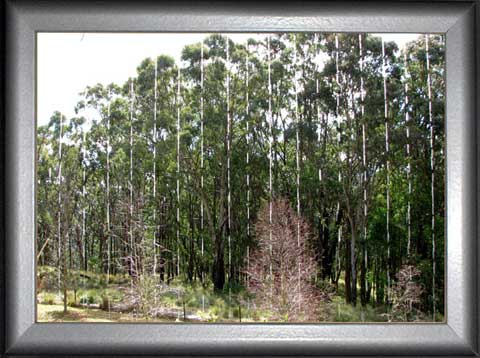
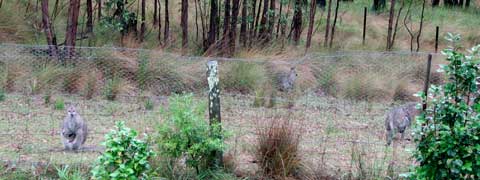 On a recent damp day, as the wallabies grazed past the house fence, one female seemed to have a light stripe across the nose.
On a recent damp day, as the wallabies grazed past the house fence, one female seemed to have a light stripe across the nose.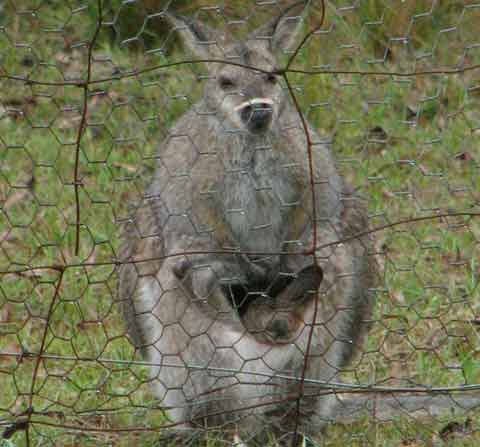 After watching for a while as she fed and bent up and down and scratched and twisted about, I fetched the camera to zoom closer and try to determine if it was a scar or no.
After watching for a while as she fed and bent up and down and scratched and twisted about, I fetched the camera to zoom closer and try to determine if it was a scar or no.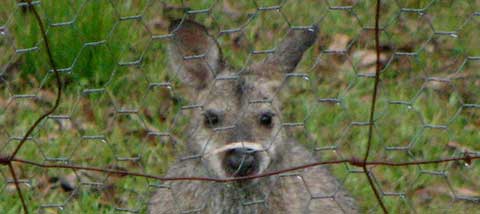 Closer still, it was revealed as a dead leaf — a damp dead leaf, pasted firmly across her nose by the rain.
Closer still, it was revealed as a dead leaf — a damp dead leaf, pasted firmly across her nose by the rain.